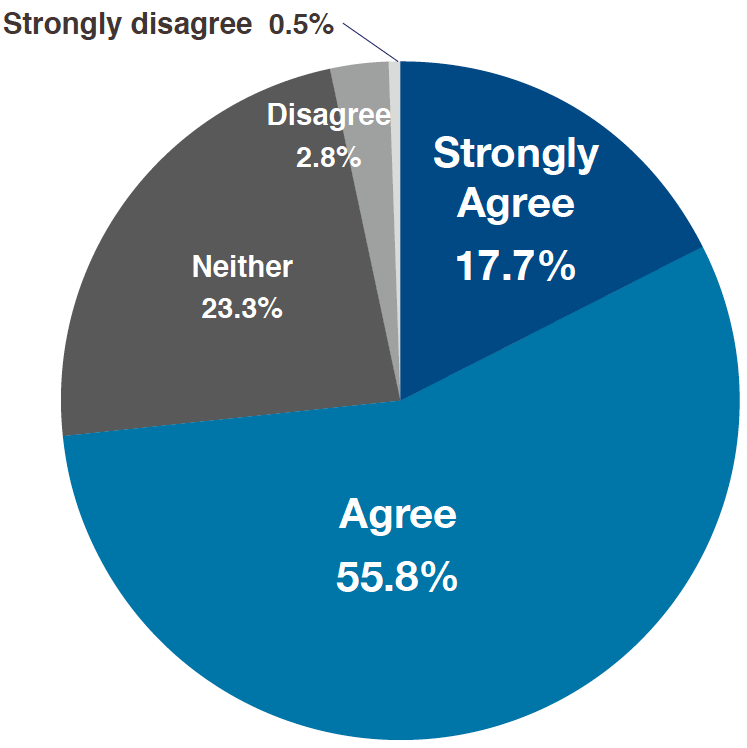An excerpt from our latest research study on Executive Coaching
How Executives Succeed in Executive Coaching
In recent years, it has become common for executives to hire executive coaches to produce better results for their organizations in various ways, such as in terms of business performance, corporate culture reform, branding, and more. The role of the executive coach is to hold dialogue with these executives, supporting them and contributing to the production of better results.
We have gathered and analyzed data from 2,512 coaching clients and examined how high performing executives were able to benefit from executive coaching. These and more can be read in our full report "How Executives Succeed through Executive Coaching"(*1).
The analysis tool used for this research was the Coaching Skills Evaluation System (CSES) survey. It is made up of three categories:
A. Overall effects of coaching felt by the clients
B. Changes clients experienced in themselves as a result of coaching
C. How the coach interacted with the client
Post-coaching, clients were asked to respond to this survey to evaluate their coaching experience and executive coaches. (For a complete list of question items, please refer to "Full List of Questions Used in CSES".)
Figure 1 shows the executive's level of results achieved in executive coaching.
Executive's level of results achieved in executive coaching
"I achieved the goals I had set at the outset of the coaching engagement.

n=215
5-point scale (1: strongly disagree, 2: disagree, 3: neither, 4: agree, 5: strongly agree)
Executives who reported achieving high level results (the 17.7% who answered "strongly agree" in Figure 1) were placed in Group A, while the others who produced moderate or low results were placed in Group B.
The results showed that executive coaches who coached high performing executives focused on dialogue about goals and purpose throughout the coaching engagement. (Details can be found in section 4-1 of our full report "How Executives Succeed through Executive Coaching")
We also divided "positions" (executives/non-executives) and "results" (high achievers/moderate & low achievers) into four groups. The 2x2 matrix in Figure 2 gives us an overview of how the participants were divided into groups.
Matrix showing how participants were divided into groups

(*1) Executives refers to CEOs, presidents, and senior executives.
(*2) Non-executives refers to managers, team leaders, and staff members.
(*3) High achievers refers to those who gave a self-evaluation score of "5: strongly agree" on "I achieved the goals I had set at the outset of the coaching engagement." (A1)
(*4) Moderate and low achievers refers to those who gave a self-evaluation score between "1: strongly disagree" and "4: agree" on "I achieved the goals I had set at the outset of the coaching engagement." (A1)
Figure 3 shows one of the 18 items in the category "coach's interaction with the clients" from the survey, the only item in which a statistically significant difference was observed (p < 0.05).
Difference between Groups A-D when coach used a variety of tools in coaching
"The coach used a variety of tools such as questionnaires and worksheets"

(*1) Executives refers to CEOs, presidents, and senior executives.
(*2) Non-executives refers to managers, team leaders, and staff members.
(*3) High achievers refers to those who gave a self-evaluation score of "5: strongly agree" on question A-1 "I achieved the goals I had set at the outset of the coaching engagement.
(*4) Moderate and low achievers refers to those who gave a self-evaluation score between "1: strongly disagree" and "4: agree" on question A-1 "I achieved the goals I had set at the outset of the coaching engagement."
When executive coaches used tools such as questionnaires and worksheets, both groups who produced better results (Groups A and C) evaluated their executive coaches differently. For the high performing groups, we can see that executives (Group A) scored higher compared to the non-executives (Group C). This may indicate that executive coaches utilized these tools more effectively with executives compared to non-executives.
Tools such as 360 degree assessments are commonly used in executive coaching to get a picture of the organization's current situation and evaluate the executive's leadership ability. These tools can be used to solve the 'executive dilemma', tackling the important problem of getting feedback from the people around the executive, which gets more difficult as he or she rises in position. It is important to the success of the executive to use tools such as questionnaires and surveys to create important opportunities for feedback.
In conclusion, executives reported being more proactive towards achieving goals and resolving issues and also being better able to deal with conflicts in interpersonal relationships. Meanwhile, it was also found that executives who strongly agreed that they achieved better results had executive coaches who interacted by focusing on conversations about goals and who utilized tools effectively.
(*1)
CSES Survey Report 2015 "How Executives Succeed through Executive Coaching"
Sample size: 2,512 clients from 28 countries who have received coaching
Survey tool: Coaching Skills Evaluation System (CSES)